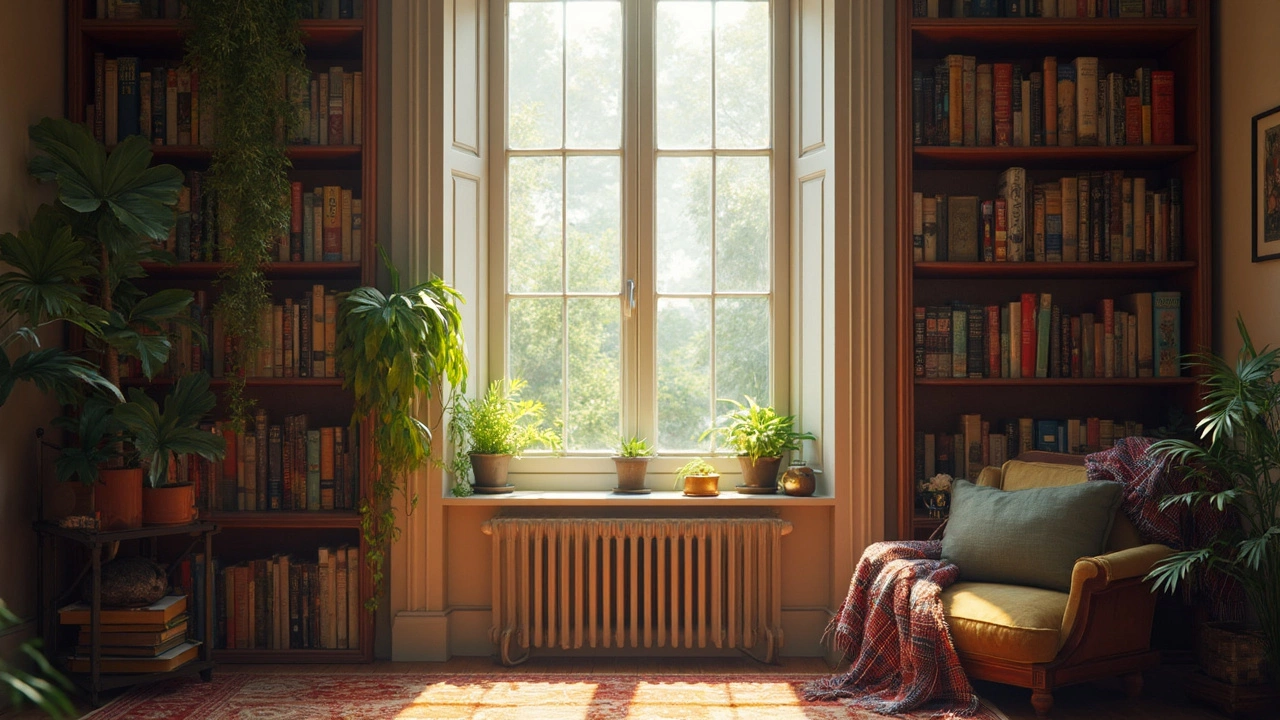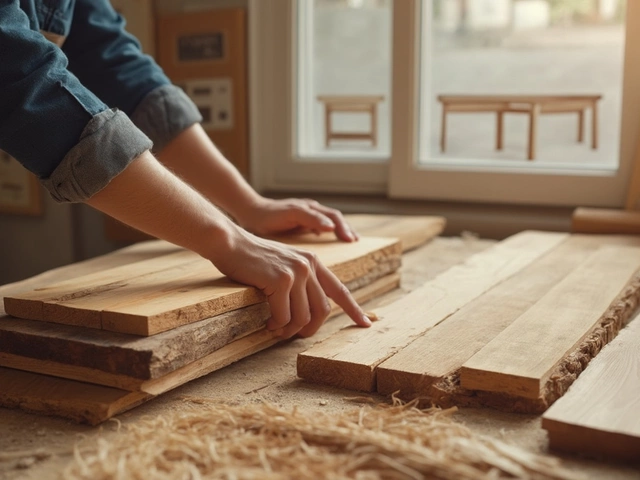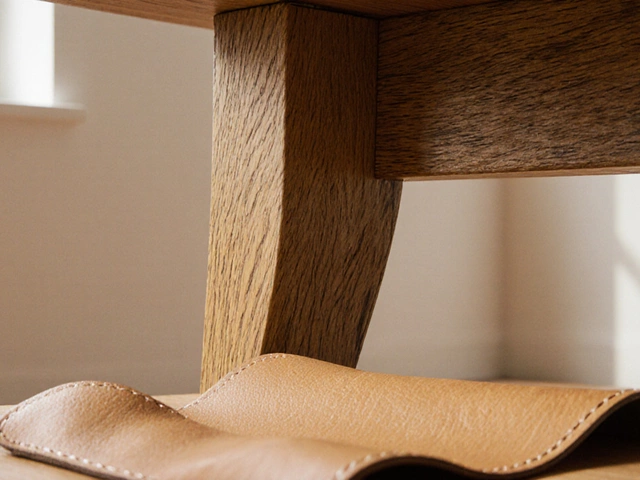Ever looked around your room and wondered, “Can I just stick this bookshelf in front of the window?” If you’re short on wall space or itching for a new setup, it’s tempting. But before you start shoving shelves, think about what you’re giving up—and what you might gain.
First off, a bookshelf in front of a window won’t burst into flames. But it definitely changes things. Natural light gets blocked or filtered, and suddenly your room might feel a lot dimmer. If you love reading near the window or rely on sunlight to keep your space bright, this move could end up a pain.
On the flip side, some folks use a bookcase as a privacy barrier, especially if their window faces a busy street or the neighbor’s curious cat. Plus, if you’re aiming for that cozy library look, it can make a room feel snug—in a good way—if done right.
But here’s the thing: books and sunlight do not get along. Too much sun can bleach spines and pages, turning favorite covers faded and brittle. If your window faces south or west, stacking old paperbacks right there is basically asking for damage.
Before dragging your shelf over, think about what you really want out of both your books and your window. Figuring out what matters more—daylight or storage—gets you halfway to the right call. Ready to see what happens next? Let’s break it down.
- How Blocking a Window Changes Your Room
- Light, Heat, and Book Condition
- Design Tricks for Shelf-Window Setups
- Plants, Privacy, and Everyday Use
- When Blocking a Window Actually Works
How Blocking a Window Changes Your Room
Let’s get real: sticking a bookshelf right in front of your window doesn’t just shuffle your stuff around—it flips how your whole room feels. First, think about natural light. Windows are the main way sunlight gets in, so when you put a tall piece like a bookcase there, you lose that glow. Suddenly, things can start to feel dark and boxed in, especially if it’s your only or main window in the room.
That’s not all. The temperature can shift too. Usually, sunlight heats up a room during the day (sometimes too much during summer), but with a shelf blocking the rays, you might notice things don’t warm up as much. In colder months, blocking a window can even help insulate a bit, especially in an older house where windows get drafty.
The layout and function of your space changes with this move. For example, if your window was a favorite spot for a reading nook, you’ll lose that sunny hangout. On the bright side, if privacy is a concern—maybe your window is street-level—the bookshelf acts as an instant barrier from nosey neighbors or passersby.
| Room Impact | Blocked Window | Open Window |
|---|---|---|
| Natural Light | Decreases | Maximized |
| Room Temperature | Cooler (can reduce heat gain) | Warmer (more heat from sun) |
| Privacy | Increases | Decreases |
| Furniture Placement | Less flexible | More options |
It’s not just about light either. Rooms feel bigger with an open window view because your eyes can "escape" outside—block that, and the space might seem smaller. If you love indoor plants, forget setting them on that window sill; most common houseplants need direct or at least bright, indirect sunlight.
So, the choice comes down to what you value: more storage and privacy, or sunlight and views. Weigh your options before committing. Make sure the trade-off actually fits your daily routine.
Light, Heat, and Book Condition
Natural light is one of the main reasons people hesitate to put a bookshelf in front of a window. When you put a solid shelf in front of glass, you block sunlight—sometimes a lot, sometimes just enough to make the rest of the space feel off. That changes how cozy or open your place feels. Some folks are totally cool with blocking a little sun, while others can’t handle the shadows.
Here’s where it gets tricky: sunlight isn’t just about brightness. It also brings heat. If you push a bookcase up against a south-facing window, you’re basically inviting the afternoon sun to toast your stuff. The back of the shelf can heat up, and heat rises to the top shelves, especially if the books are packed tight. Too much heat, and you get warped bindings, wrinkled pages, or even that weird musty smell from trapped humidity. Not a vibe anyone wants.
Let’s talk sun damage. Books exposed to direct sunlight will fade—sometimes in just a few months. Hardcover dust jackets turn pale, paperback spines bleach out, and old photographs or art will look dull. If you value crisp covers and vivid colors, sun exposure is a deal breaker. Here’s a quick breakdown of what can happen:
| Exposure | Visible Effect | Timeframe |
|---|---|---|
| Direct Sunlight | Faded covers & brittle pages | 1-6 months |
| Filtered Sunlight (curtains or film) | Slower fading | 6+ months |
| No Sunlight (shaded) | Color remains strong | Years |
Thinking about heat? Some homes with older or thin windows get hot fast, which doesn’t help your books at all. That’s when you see pages curling or covers warping at the edges. Modern double-paned windows help, but direct sun is still rough on paper.
If you’re set on using that window space for your bookshelf, here are some tricks:
- Use UV-blocking window film or good curtains to cut down sun exposure.
- Rotate books on sunny shelves every few months so damage doesn’t stack up in one spot.
- Keep rare or valuable books somewhere else, just in case.
- Leave a small gap between the shelf and glass to stop heat buildup.
So, is a bookshelf in front of a window bad for your books? If you don’t take a few precautions, it can be. But with some planning, you can have both storage and light—no sunburned paperbacks in sight.
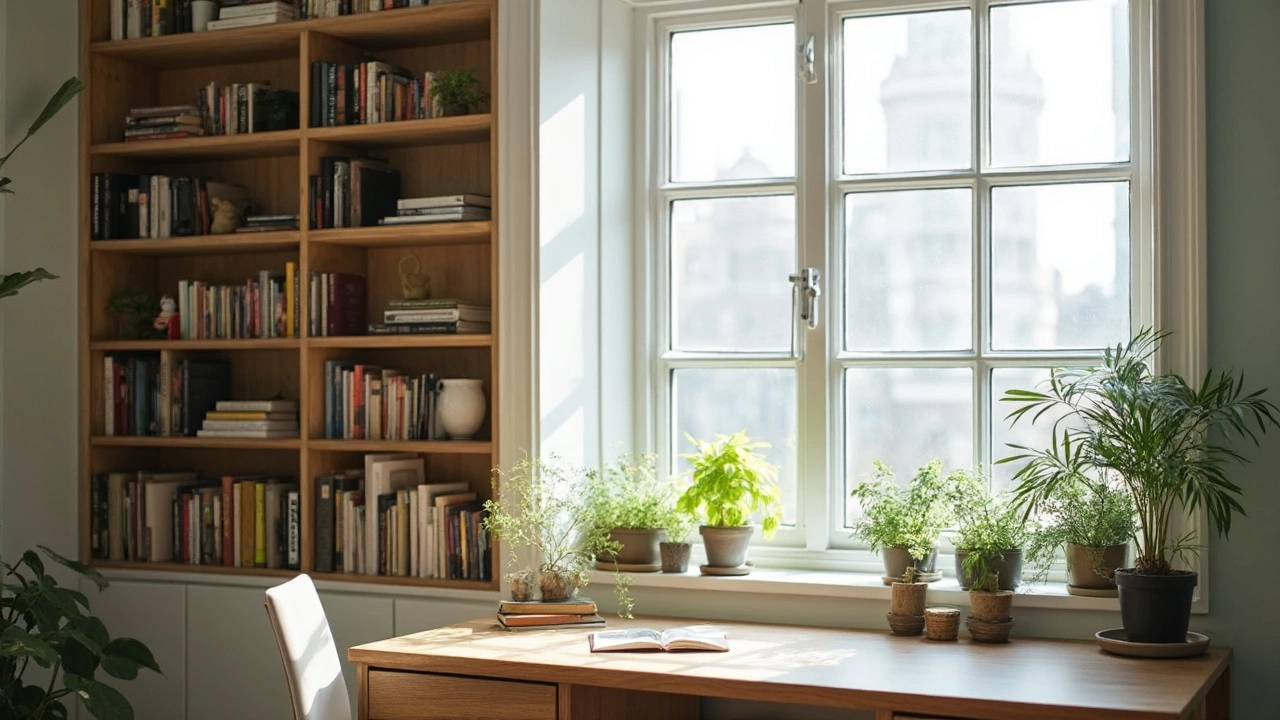
Design Tricks for Shelf-Window Setups
Moving a bookshelf in front of a window doesn’t have to turn the room into a cave. You just need to play things smart. Let’s talk about some tricks people actually use to make this setup work, both for looks and everyday use.
First up, go for an open-back shelf. Those let sunlight pass right through, so the area doesn’t feel boxed-in. You’d be surprised how much difference it makes—light sneaks between your books and keeps the room from feeling gloomy. Ikea’s KALLAX and similar cube storage racks are favorites because they keep things airy and double up as display spots for art or plants.
Don’t be afraid to use a shorter bookcase. If the shelf only goes halfway up the window, you’ll still get loads of natural light on top. This also works if you’ve got deep window sills—slide a short shelf under the sill, and you’ll barely notice the window’s blocked.
- Position your bookcase so it sits a few inches away from the glass. This space lets curtains flow, gives your books breathing room, and makes cleaning way easier.
- Try arranging books horizontally on some shelves and vertically on others—more space for the sun to sneak through.
- If privacy’s your thing, use baskets or storage cubes on lower shelves to block unwanted views but keep top shelves open for sunlight.
If you’re worried about heat from the window, stick to displaying hardcovers or things you don’t mind fading on the sunniest side. Or, try UV-filtering window film. It looks almost invisible and can block up to 90% of the worst rays—way better for your books and furniture.
Need a real-world peek? Here’s how different setups affect light—measured in average lux (brightness). Higher numbers = brighter.
| Setup | Avg. Natural Light (lux) |
|---|---|
| Open window, no shelf | 900 |
| Open-back shelf | 650 |
| Closed-back shelf | 350 |
| Shelf with plants/art, no books | 700 |
Style-wise, use the shelf as a frame. Put a few favorite hardbacks, a leafy plant, or a sculpture right in the brightest spot. Suddenly the window doesn’t look blocked—it looks designed. Mix it up every season and see how the vibe changes.
Plants, Privacy, and Everyday Use
So you’re thinking about putting a bookshelf in front of a window, but don’t forget about what that means for your plants and your day-to-day living. Windows are prime real estate for houseplants—those leafy buddies need light. Cover a window with a bulky bookcase, and your cactus or pothos might end up pretty sad. If you’re attached to your plants, either skip blocking the window or stick with a shelving unit that’s open-backed and lets light sneak through.
Blocking a window with a bookcase can work wonders for privacy. Let’s say your window faces a sidewalk or a nosy neighbor’s kitchen—you gain some peace by throwing up a solid barrier. If privacy is what you’re after, a tall, solid-backed bookcase does the trick far better than flimsy curtains. Just think about airflow, though—blocking a window means less breeze and maybe stuffier rooms, especially if it’s a window you actually open.
Everyday use matters, too. A bookcase in front of your main living room window can turn opening blinds or windows into a wrestling match. Cleaning becomes tougher, and the edges of your shelves could collect dust faster because they’re not hit by sunbeams. Some people leave a small gap to make opening the window possible, or just use a shorter bookcase so at least the top half of the window is still clear.
Are there stats on how many people double up windows and shelves? Not really, but in home decor polls, over 60% of folks wish they had more natural light, even if it means less storage. That says a lot—most of us prefer rooms that feel open and bright to ones packed with shelves everywhere.
Here’s what works in real homes:
- Pick open, airy shelf designs if you hate the idea of a dark room.
- Go tall for max privacy, but short if you want daylight at least up high.
- Use the window zone for rarely opened books or pretty storage baskets to avoid constant dusting.
- Group sun-loving plants on part of the window that still gets light, or switch to low-light varieties if you go all-in on shelves.
It’s all about balancing storage, privacy, and what you need every day. Make sure the setup matches your life, not just what looks good in design magazines.
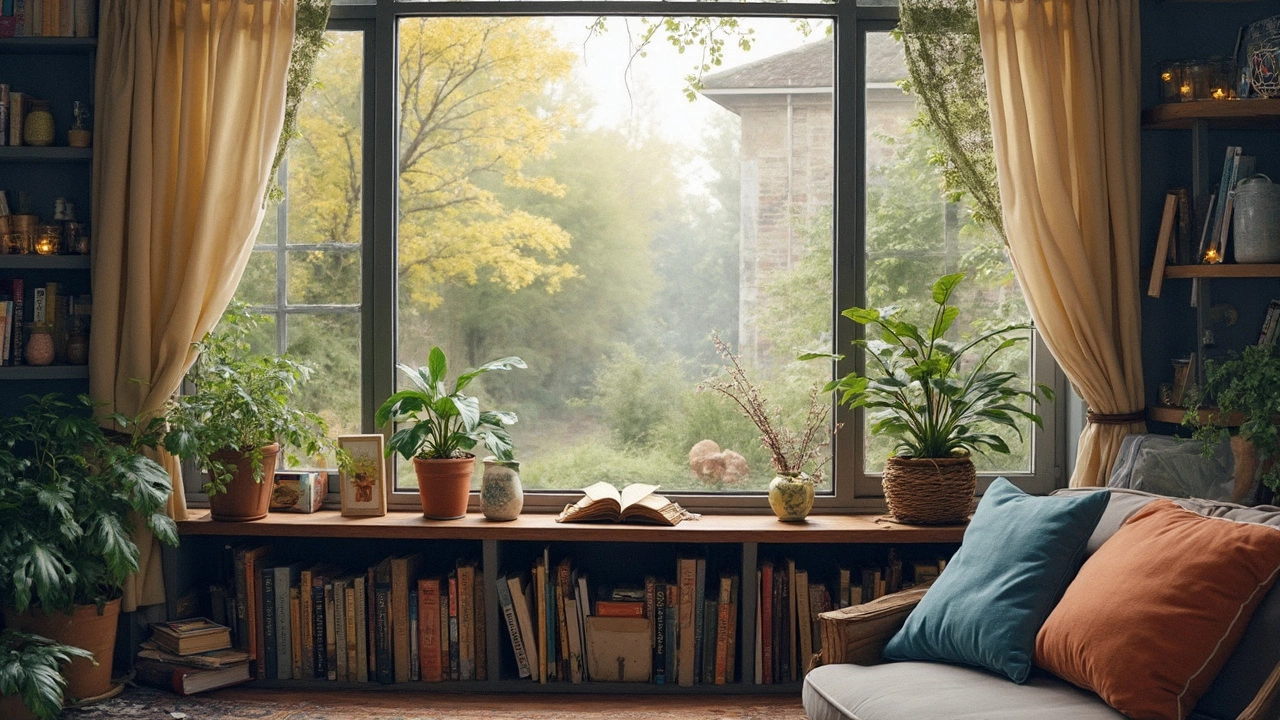
When Blocking a Window Actually Works
Sometimes, pushing a bookshelf in front of a window isn’t just okay—it’s the best move for your space. If your room turns into a sauna during the summer because that window faces the sun, blocking some of that light with a bookcase makes it way more livable. According to the U.S. Department of Energy, up to 76% of sunlight that falls on standard double-pane windows turns into heat, which means less sunlight equals less heat inside. So, if you want to keep things cooler, that bookcase can actually help out.
There’s also the privacy angle. Maybe you’re not a huge fan of your neighbor being able to see what you’re reading or doing. A bookshelf offers a low-key way to keep things private without messing with curtains or blinds. Plus, a blocked window becomes the perfect backdrop for displaying art, plants (especially low-light ones), or funky collectibles instead of just another boring window shade.
Let’s talk home offices. Tons of people are working from home these days, and not every spot is great for a video call. A bookshelf in front of a window can keep glare off your computer and give you a visually interesting background. One famous interior design blog put it like this:
"If you’re out of wall space but need more storage, floating a bookcase across a window can be a smart problem-solver—just keep the window cracked for ventilation and make sure your building allows it." — Apartment Therapy
Want to make sure it actually works for you? Here are a few quick-fire pointers:
- If you’re fine losing the view and natural light, go for it—just check which direction your window faces.
- Choose bookcases that aren’t super deep or super high so they don’t completely swallow up the light.
- Open-back bookshelves let in more light while giving you storage. IKEA’s KALLAX, for example, is a go-to for this setup.
- If you absolutely need some daylight, try a low bookshelf—think waist-high—so some sun still comes in above the shelf.
Quick stat check:
| Room Type | Percent Using Bookcases in Front of Windows* |
|---|---|
| Home Offices | 28% |
| Living Rooms | 14% |
| Bedrooms | 9% |
So, is it always bad? Nope. If you’ve got reasons like keeping out heat, making your space cozier, or grabbing some privacy, blocking that window can totally work. Just weigh what you’re giving up before you do it. Sometimes, your window is better off as extra wall space—especially if it's just looking out onto a brick wall anyway.
